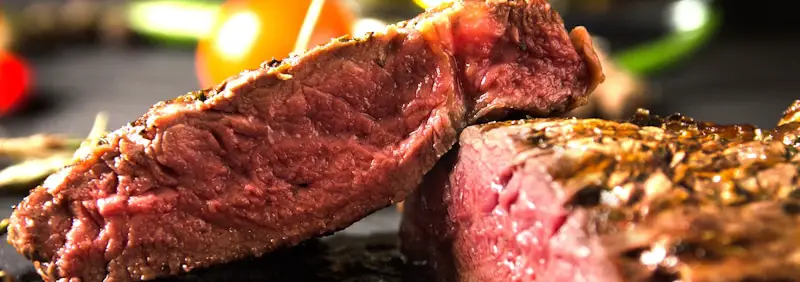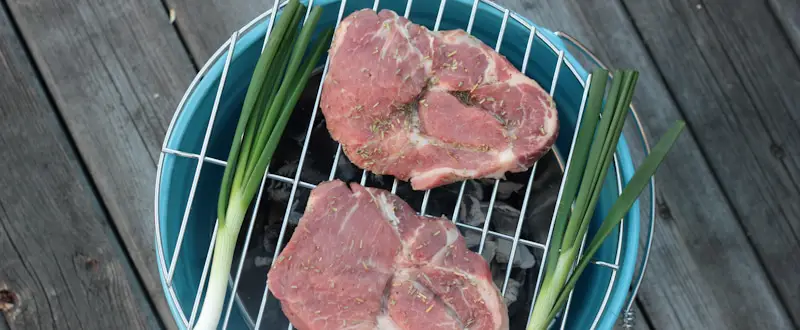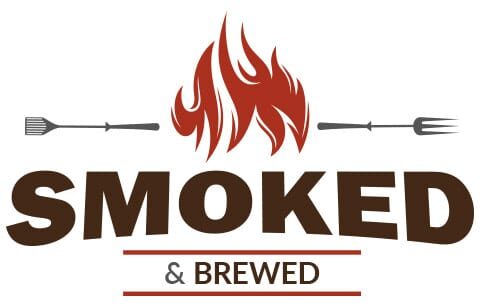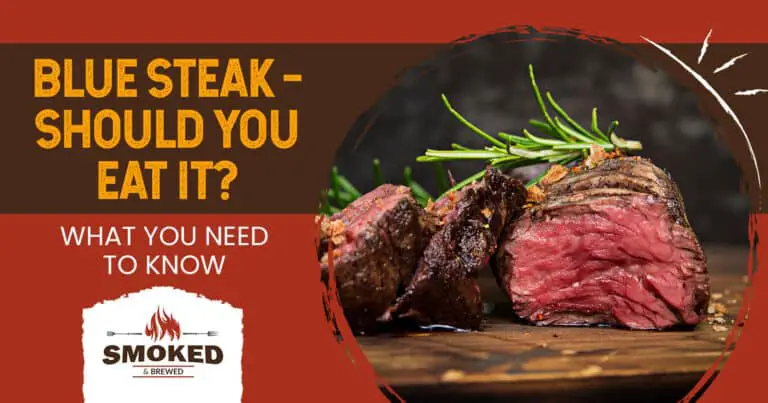If you love experimenting with different types of steaks, flavors, and recipes, you might have wondered what a blue steak is. True steak aficionados love blue steak for its unique ‘beefy’ taste and texture. These steaks not only have the authentic flavors of rare steak but also a crispy exterior that’s equivalent to a well-done steak.
Blue steak is one of the rarest steak preparations and is also known by names such as ‘bleu’ or ‘blue rare’ steak. The steak is prepared by searing the meat at 120℉ (or 48.8℃) until the crust is perfectly caramelized and the interior is just warm enough. It has a soft, dark-red/ purplish core, with no juices flowing. When cooked properly and consumed occasionally, the blue steak may be fine to eat.
The essential trick for preparing a blue steak is ‘high heat searing.’ When cooking blue steak, it is important to choose the best cuts so that you get the most accurate results. Overcooking or undercooking may lead to undesirable results and may render the meat indelible. Continue reading to find out whether it is safe to consume blue steak and how to cook it correctly.

What Is Blue Steak?
Also known as extra rare steak, or ‘bleu,’ the blue steak is a steak where the meat is cooked at a low temperature and for a short period. It is called a blue steak because of oxygen depletion that takes place while cooking the meat. Such a rare steak is lightly seared on the outside but is dark red or almost purplish on the inside. Thus, the blue rare steak is actually considered raw on the inside. The steak feels spongy when pressed between fingers with almost no resistance. It has a soft and cold center.
However, the good part is, when cooked accurately, a blue steak will have no red juice flowing, which is typical of rare or medium-rare steak.
Which Cuts Are Best For Blue Steak?
For preparing a blue steak, leaner and tender cuts are the best to work with. More fat and marbling may not get the perfect results you are looking for. Since fat needs longer exposure to heat, they are not ideal to be used for blue steak. If you try to cook such a steak, it will deliver tough, chewy, and sometimes even unevenly cooked chunks of fat. For the same reasons, you should also avoid using steaks that are cheap, tough, or have minimal marbling. Such meat will require a lot of marination time and heat exposure so that the fibers can break down and produce tender results.
The best cuts for blue steak are top sirloin, round steak, sirloin tip side steak, and filet mignon. Each steak should be around 1 to 1 ½ inch thick and have a medium amount of fat marbling.
As a general rule, avoid steaks that have a lot of marbling. Thus, the steaks to avoid are – flat steaks like flank and hanger, T-bone or Porterhouse steak, Ribeye, high-end steaks like Kobe or Wagyu, etc. Also, you should not use chewy or flat steaks.
How To Cook Blue Steak
The goal of cooking a blue steak is to have a charred or seared exterior and keep the inside as raw as possible. You can either grill your steak or use a heavy-duty thick-based frying pan to cook a blue steak. Using a cast iron skillet will render the most authentic and charred or smoky finish to the steaks. Here’s the right way to cook a blue steak:
Thawing
Nobody likes a steak that is cold in the middle. To start with, make sure you either use a fresh steak or fully thaw/ defrost it before cooking. Keep the steak outside of the fridge for at least ½ an hour before seasoning so that you get the desired results.
Seasoning
For a rich and beefy flavor, it is best to season the steak with just a hint of salt and freshly ground black pepper. Season the steak 2-hour in advance for every 1cm thickness. If you want to enhance the flavor of the steak, you may add some balsamic vinegar or even a readymade marinade of your choice.
Searing
Searing is the best method to cook a blue steak. For searing, heat the pan on a medium-high flame and add some butter for flavor. If you are using a steak that has a good amount of fat on it (such as a well-marbled sirloin steak), then you can directly place the steak on the hot pan with the fat side down.
Remember to add the steak just right after splattering, and before the oils start producing smoke. When one side gets seared or has a perfect caramelized brown color crust on it, flip the steak with the help of a tong. Insert the meat thermometer into the middle of the steak. Once the internal temperature reads 115 to 120 degrees Fahrenheit, you must immediately remove it from the heat source.
What Is The Temperature To Cook Blue Steak?
The ideal temperature to cook a blue steak is between 115 to 120 degrees Fahrenheit (or 46.1 to 48.8℃). Some pitmasters even recommend cooking a blue steak at 85℉, but the aforementioned temperature range is considered much safer. Cooking it at a higher temperature would produce the flavors of ‘rare,’ and lower temperatures would leave the meat tasting raw and cold.
How Much Time Is Required To Cook A Blue Steak?
The time required to cook a blue steak will depend on the size and weight of the steak. A usual 1-inch thick blue steak would need about 1 ½ minute of searing on each side.

Is Blue Steak Safe To Eat?
Consuming raw or undercooked meat can cause food-borne illnesses, particularly those related to Salmonella and E.coli. The USDA recommends that a steak should be cooked with an internal temperature of at least 145℉ to consider it safe to eat.
Though the blue steak appears raw on the inside, it is considered safe to eat only when it is cooked properly. Since the steak is seared at a high temperature, the bacteria on the meat’s exterior or surface is killed. Searing on all sides also ensures there are no pathogenic (or disease-causing) organisms on the meat. Such a seared exterior derives that perfect umami taste due to Mallard’s reaction.
Some Tips To Remember While Cooking a Blue Rare Steak
- While searing a blue rare steak, the second side may not be as nicely caramelized as the first side. This is because, by the time the second side is perfectly seared, the meat has already acquired its required internal temperature.
- Since blue steak is not cooked at high heat, the fat will not melt completely, and the meat is tough and chewy than other tender cuts.
- The surface of the steak must be dry to achieve a beautiful golden crust while searing. You can use a paper towel to draw out moisture from the surface.
- The fat for searing the steak should have a high smoking point. Thus, you may use grapeseed oil, canola oil, extra virgin olive oil, or peanut oil.
- Make sure you disinfect and dry the tongs each time after use.
- Do not press down the steak during the searing process.
- When cooking blue steak, allow a good ‘long rest’ before you slice or serve the meat.
- To kill all the bacteria on the surface, you must sear not only both sides but also the edges and the corners.
A slightly modified version of Blue Steak is the Pittsburgh-style steak. This version involves the usage of a lot of butter to have charred or burnt exteriors.
Scot has loved smoking food in his free time for the last few years. Each major holiday or off-weekend, Scot spends days testing and prepping new recipes for perfection.

